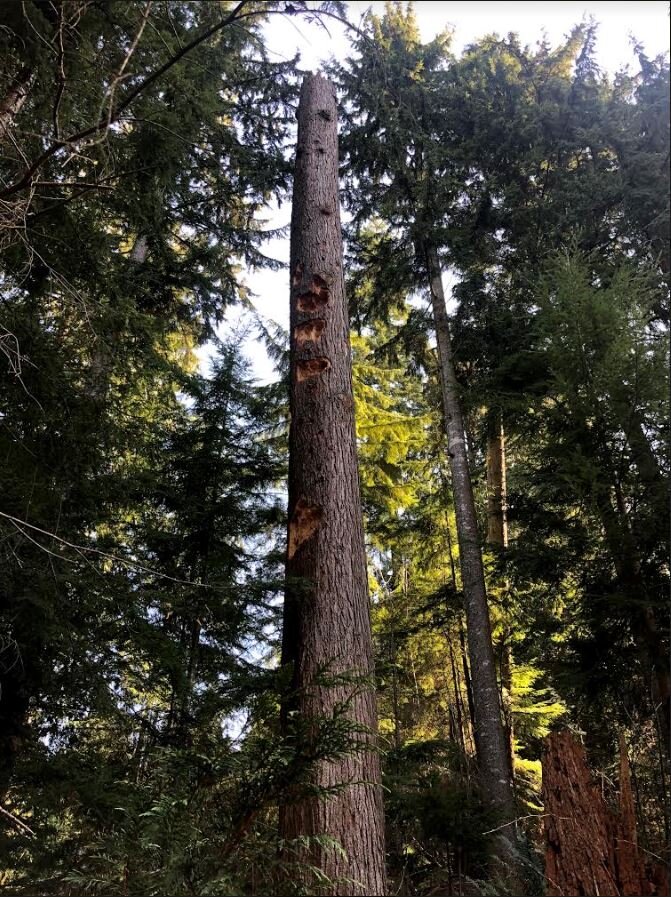We were faced with one of my least favorite decisions -- tree removal. I try to preserve trees at all cost, but this large Hemlock that sidled up to our driveway was showing signs of disease and dying over the previous years. Any bit of wind or weight of snow would cause it to drop large limbs (usually right across our driveway), and it was producing loads of its tiny pine cones, which we were told is a last energy effort the tree uses to ensure succession with future trees. We suspect a fungal infection, like root rot, was slowly stripping it of life. So, we had to make the decision to remove it before risking it falling and damaging other trees around it, our driveway, and destabilizing the slope upon which we live. It was a sad day. However, I knew that the tree could continue to provide services to the land and wildlife surrounding it even after death. We asked the tree company to leave a snag, which is to say, they removed all the branches and the top two-thirds of the tree. It was a tall tree, likely 200 feet, so the remaining third stands like a soldier at attention.
We did not notice any obvious visitors to the tree for the first year, but we occasionally saw a raven perched atop or Douglas squirrels scurrying up the side. Most notably, a pair of woodpeckers have made this snag one of their newest projects. They have been working on it for the last year, and we first noticed evidence of them in all the neatly piled wood chips at the base of the tree. They do a fine job of mulching the wood so it can decompose quickly back into the soil as nutrients for other plants. Finally, I spotted one when I was leaving for work early in the morning, clinging to the side of the tree and hammering away. A bit later I saw both from the kitchen window working together on opposite sides of the tree. I usually see them in the mornings, and sometimes hear their call while I drink my coffee, alerting me to their arrival. Occasionally one sits on top while the other tap-tap-taps. I have my fingers crossed they will make a cavity nest and stick around for awhile. Or perhaps, they are just looking for bugs. Whatever their reason for choosing my tree snag, I'm so glad we left a remnant of the magnificent tree to continue its journey for a bit longer in the cycle of nature.
If you are faced with tree removal, consider the birds, bugs, raccoons, surrounding plants, and the soil that would appreciate that tree for shelter, food, nutrients, and root stabilization for much time to come. It will serve far more services and benefits as a snag than firewood.
Written by: Sara Dunleavy



